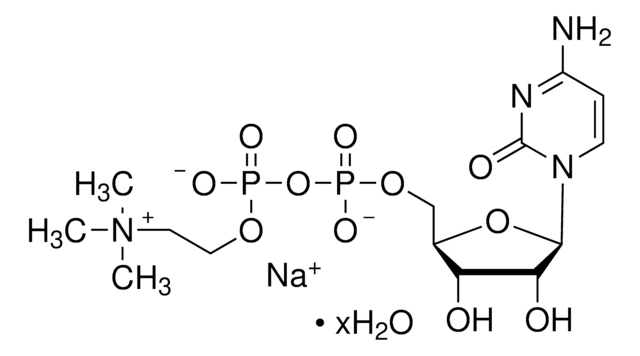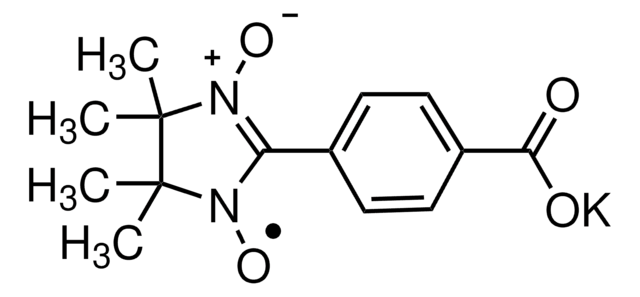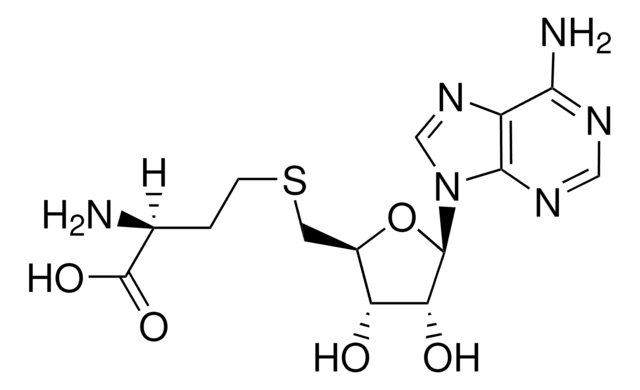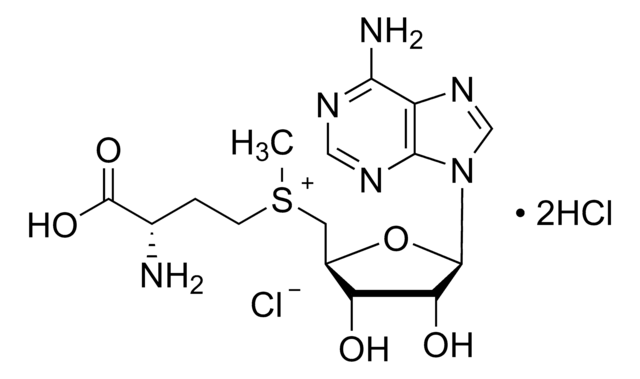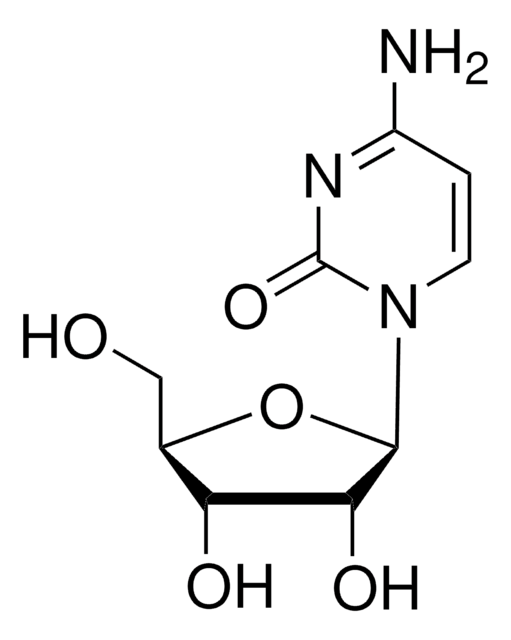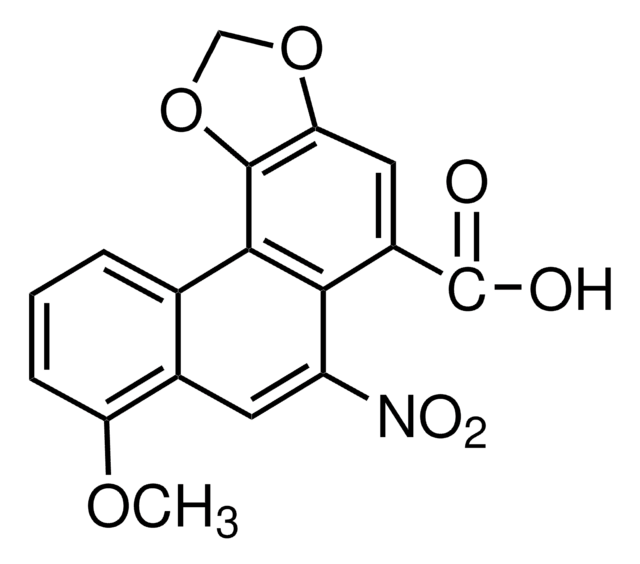C0256
Cytidine 5′-diphosphocholine sodium salt dihydrate
~98%, from yeast, solid
Synonyme(s) :
CDP-coline, Citicoline sodique, P′-[2-(Triméthylammonio)éthyl]ester cytidine 5′-(trihydrogène diphosphate) sel interne monosodique
About This Item
Produits recommandés
Source biologique
yeast
Essai
~98%
Forme
solid
Couleur
white
Solubilité
H2O: 100 mg/mL
Température de stockage
−20°C
Chaîne SMILES
[Na+].C[N+](C)(C)CCOP([O-])(=O)OP([O-])(=O)OCC1OC([C@H](O)[C@@H]1O)N2C=CC(N)=NC2=O
InChI
1S/C14H26N4O11P2.Na/c1-18(2,3)6-7-26-30(22,23)29-31(24,25)27-8-9-11(19)12(20)13(28-9)17-5-4-10(15)16-14(17)21;/h4-5,9,11-13,19-20H,6-8H2,1-3H3,(H3-,15,16,21,22,23,24,25);/q;+1/p-1/t9?,11-,12-,13?;/m1./s1
Clé InChI
YWAFNFGRBBBSPD-MBWJOHGMSA-M
Description générale
Application
Actions biochimiques/physiologiques
Attention
Code de la classe de stockage
11 - Combustible Solids
Classe de danger pour l'eau (WGK)
WGK 3
Point d'éclair (°F)
Not applicable
Point d'éclair (°C)
Not applicable
Équipement de protection individuelle
Eyeshields, Gloves, type N95 (US)
Faites votre choix parmi les versions les plus récentes :
Déjà en possession de ce produit ?
Retrouvez la documentation relative aux produits que vous avez récemment achetés dans la Bibliothèque de documents.
Les clients ont également consulté
Notre équipe de scientifiques dispose d'une expérience dans tous les secteurs de la recherche, notamment en sciences de la vie, science des matériaux, synthèse chimique, chromatographie, analyse et dans de nombreux autres domaines..
Contacter notre Service technique

